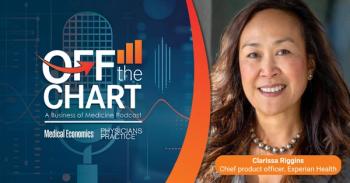Join us Sept. 19 & 20 in Philadelphia at Practice Rx, our new conference for physicians and office administrators to help improve your medical practice and your bottom line.
When Patients Ask How Much Care Costs
Healthcare pricing throughout the United States is inconsistent, with no national norm to quantify cost or measure quality.
I am pretty good at estimating costs when it comes to a gallon of gasoline or a good glass of beer (though I have been accused of being a “beer snob” when I ask for a seasonal beer with an unchilled pilsner glass, as opposed to a mug). However, I get a “little fuzzy” when it comes to the pricing of a loaf of bread or quart of milk. Healthcare can also get “a little fuzzy” when it comes to pricing.
If you call your local hospital and ask how much a colonoscopy costs, the person on the other line might say, “I’m not sure, check your policy, call your insurer, and speak with your physician.” If you do check your policy, call your insurer, and ask your physician (don’t forget you may still need to call the lab and the anesthesiologist), you likely still have no idea.
In a series of articles entitled “Paying Till it Hurts,” The New York Times reported in its June 1, 2013 story, that healthcare pricing throughout the United States is inconsistent, with no national norm to quantify cost or measure quality. The Times reported colonoscopies costing $1,908 in Baltimore, $4650 in Chicago, and $8,577 in New York City.
In the June 30, 2013 article, The Times cited various international costs for the birth of a child. The average cost of a normal vaginal delivery in the U.S. was $9,775. The cost for a cesarean section was $15,041. The corresponding costs in France were $3,541 and $6,441. In Great Britain they were $2,641 and $4,435.
Of course we can cite the need for medical malpractice reform, opine whether we need socialized medicine or a totally free market economy, and even take shots at Obamacare, but the bottom line is medicine has always been devoid of the basic norms of consumerism.
One of the inherent problems with healthcare consumerism is that the payer of the service is most often not the actual consumer or patient. Insurers negotiate pricing with most employer groups, who then extend the “pre-negotiated rate” to the providers or physicians, who are then not allowed to balance bill the patient. Adding to that cogent arrangement, the actual patients will most likely have a deductible and they often do not know what is the level of the deductible or their share of the final bill.
I once had a patient from my medical practice send me a written “cost calculator” report from her insurer. The calculator compared pricing from my group for her obstetrical care, as well as the cost of a normal vaginal delivery verse other OB/GYN practices and hospitals in our region. I thought it was a great tool and told her so.
I then asked her how her insurer measures and documents quality. She could not answer that question and quite frankly, I also had difficulty documenting how my practice measures quality.
Attempting to address this issue, vendors such as the Healthcare Blue Book based in Brentwood, Tenn., and Castlight from San Francisco, Calif., are providing analytic tools and data for healthcare consumers. Costs, outcomes, patient satisfaction reports, and other information is aggregated to produce baseline, measurable information.
Clinical information technology will be the mechanism and tool for capturing, analyzing, and publishing the information, however it will eventually be incumbent upon the physicians and providers, to answer their patients when they ask: “How much will that service cost me?
Newsletter
Optimize your practice with the Physicians Practice newsletter, offering management pearls, leadership tips, and business strategies tailored for practice administrators and physicians of any specialty.










